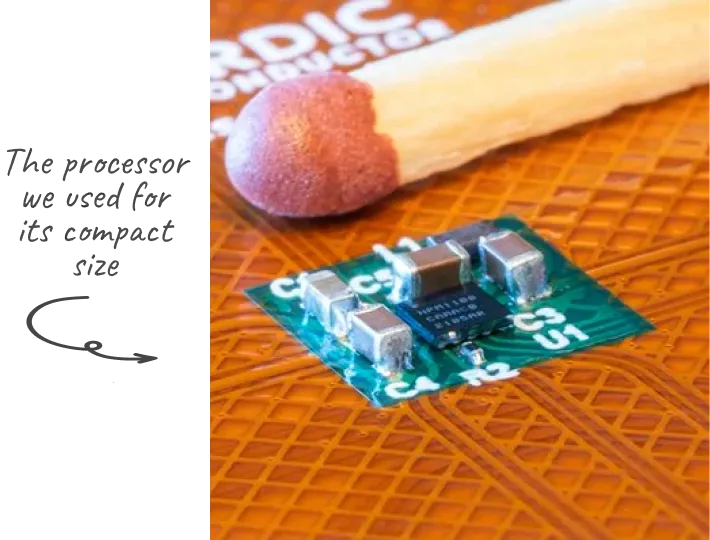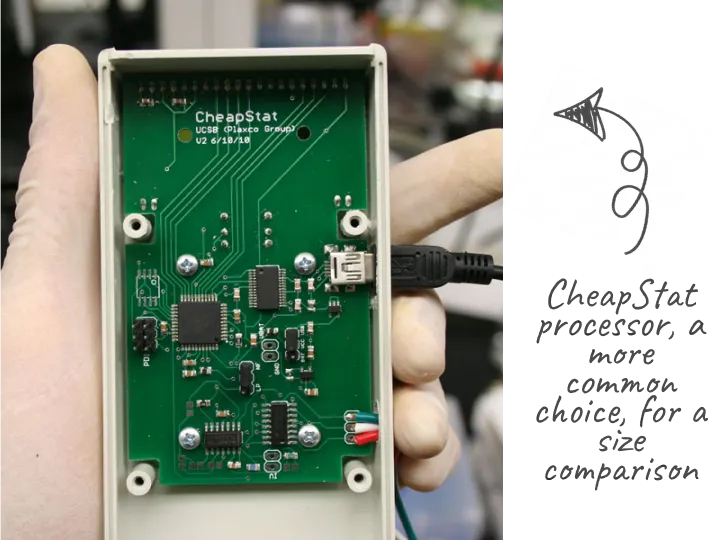
Develop a fast and portable food allergen and ingredient sensor that would enable people with allergies to quickly test their food.
Designed a sleek and lightweight product in 4 months that could deliver test results for the 8 most common allergens within 60 seconds.
Client was able to raise pre-seed funding of $3.3 million in 2020, followed by an additional $0.8 million in the seed round the following year.
In a world where over 550 million people are affected by food allergens, this client wanted to develop a portable and user-friendly food detection device that would transform the frontiers of the food safety industry. This US-based company had developed a proprietary technology made up of thin films that would match and bind to the target allergenic molecules.
The client was now looking to build a processing unit that would generate unique signals to alert consumers about an allergen’s presence. They wanted Tintash to develop a sleek, compact, and lightweight sensing device that users could easily wear or carry around.
The client engaged us as their development partner right at the beginning of their product journey. The project started with a discovery phase during which our team helped refine the client’s requirements, define their major milestones, and finalize the budgeting estimates. Tintash was to lead through all the stages of product prototyping, including the hardware and firmware designs and product development, all the way to a production-ready design.
Our in-house hardware team began work on the schematic, PCB design and layout and had a small batch of boards fabricated from China. The next step included board bring up and modular testing before dispatching the fully functional and verified boards for testing by the client in the US.
The client wanted a display on the device and to include a battery that would last at least a couple of weeks. At the same time however, they wanted a product that was easy to carry around and could be categorized as a jewelry item. The challenge facing our hardware team was to cater to every product requirement by including and fitting all the various components while ensuring the final design was compact, lightweight, and sleek.
To meet these design requirements, we selected one of the more compact-sized Nordic semiconductors. To support a long life, we added a battery that was completely rechargeable within two hours and could last two weeks. We also added an OLED graphical display on the device that would signal allergens to users.


On the firmware design and development front, our team created a custom Bluetooth service architecture to ensure optimal exchange of data between the deep processing unit and the client’s associated mobile app. Since the client had not yet developed this app, our team created a dummy app (a different app was later developed and launched independently by the client) to determine feasibility and conduct firmware testing and debugging.
Tintash also assigned a technical project manager (TPM) who was responsible for sprint planning and execution, defining milestones, and ensuring their timely delivery. The TPM maintained direct contact with the client’s product team to provide consultation, gather feedback, and schedule demos of the completed milestones.
The client’s detection platform combined the utilization of molecularly imprinted polymer (MIP) technology with an electrochemical system to identify specific allergenic components. This platform comprised two components: a compact reader, jointly developed by Tintash, and a sampler independently created by the client.
The platform worked in this simple way: individuals would initially gather a sample of their food using the sampler, which would subsequently be inserted into the reader for testing. Within a span of 60 seconds, the test results would be displayed on the device’s screen. Users also had the option to connect the device with the accompanying app to store their test results.
The prototype we helped develop could run quick and accurate tests for the top eight most common food allergens (peanuts, tree nuts, fish, shellfish, wheat, eggs, milk, and soy) as well as gluten and sesame. Our efforts which lasted almost four months enabled the client to subsequently raise around $4.1 million in pre-seed/seed funding over the next two years.
The successful fundraising put the client on course to expand its product offerings and cover more allergens, manufacture beta units, launch pre-orders, and enter into partnerships with restaurants and companies. That company today is well on its way to achieving its vision of offering people with allergies a feeling of freedom and security.